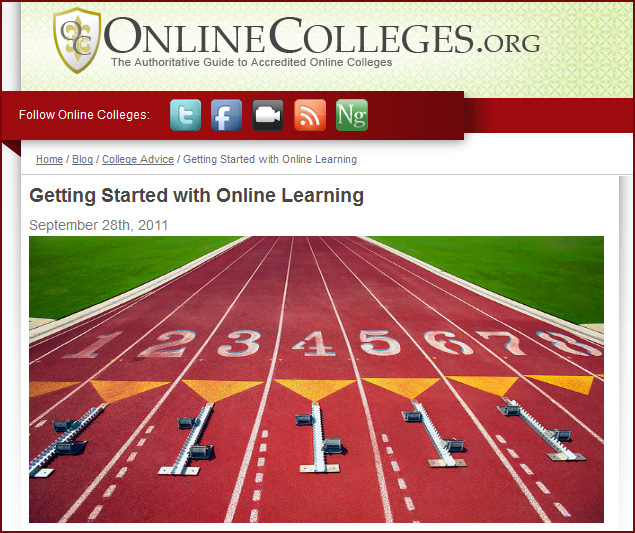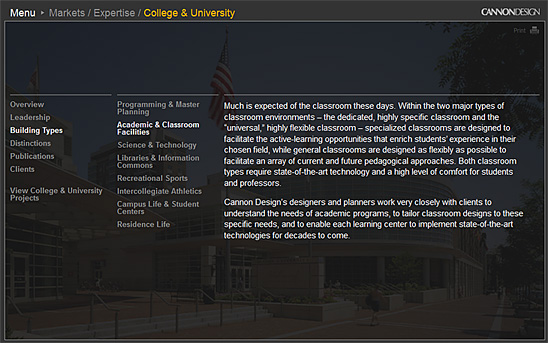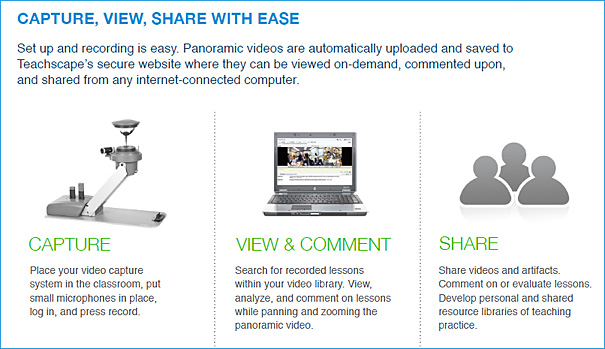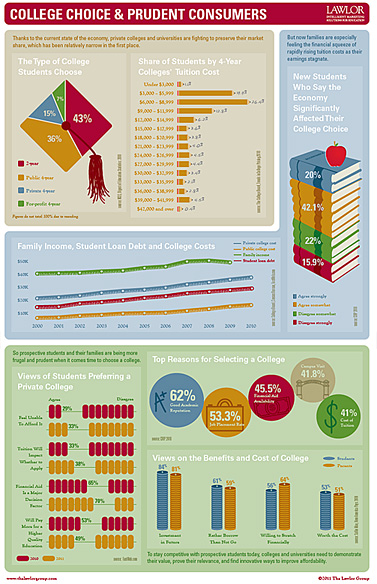The University of Wherever — from The New York Times by Bill Keller
Excerpt:
The traditional university, in his view, serves a fortunate few, inefficiently, with a business model built on exclusivity. “I’m not at all against the on-campus experience,” he said. “I love it. It’s great. It has a lot of things which cannot be replaced by anything online. But it’s also insanely uneconomical.”
…
Disrupt is right. It would be an earthquake for the majority of colleges that depend on tuition income rather than big endowments and research grants. Many could go the way of local newspapers. There would be huge audiences and paychecks for superstar teachers, but dimmer prospects for those who are less charismatic.
Also see:
Addendum:
- Guidelines from Bretford.com
Guidelines for the design of effective learning spaces should support teaching and learning opportunities. The following factors should be considered when providing learning spaces…
Your new campus guide: A small patterned square that talks to your smartphone — from The Chronicle by Jie Jenny Zou
Debt to degree: A new way of measuring college success — from educationsector.org by Kevin Carey and Erin Dillon
Excerpt:
The American higher education system is plagued by two chronic problems: dropouts and debt. Barely half of the students who start college get a degree within six years, and graduation rates at less-selective colleges often hover at 25 percent or less. At the same time, student loan debt is at an all-time high, recently passing credit card debt in total volume.1 Loan default rates have risen sharply in recent years, consigning a growing number of students to years of financial misery. In combination, drop-outs and debt are a major threat to the nation’s ability to help students become productive, well-educated citizens.
Related articles I saw today on this include:
- U.S. forcing some colleges to explain huge tuition hikes — chicagotribune.com
- Uncle Sam calls out steepest college tuition hikes — from money.cnn.com by Annalyn Censky
- Extreme tuition hikes ahead — from money.cnn.com
Colleges increase tuition after state cuts
-
Bringing Transparency to College Costs — The White House by Ezra Mechaber
Also see:
- College Affordability and Transparency Center — collegecost.ed.gov and http://collegecost.ed.gov/catc/Default.aspx
Google Building “Global Classroom” in YouTube EDU with 400 Colleges Worldwide — from blip.tv
About the above video:
Having launched just over two years ago as a hub for college and universitie YouTube channels, YouTube EDU has become a destination for education, providing an index for a broad range of topics and campus activities, says Angela Lin who manages the education program at YouTube. The YouTube site integrates content from 400 colleges and universities in the United States, Canada, Europe, Israel and Australia.
Key education issues dividing public, college presidents, study finds — from the WSJ by Kevin Helliker
The general public and university presidents disagree about the purpose of college, who ought to pay for it and whether today’s students are getting their money’s worth.
But university presidents and the average American agree that the cost of higher education now exceeds the reach of most people.
Those are broad findings from a pair of surveys released late Sunday from the nonprofit Pew Research Center. The surveys took place this March and April, one posing college-related questions to 2,142 American adults, the other to 1,055 presidents of colleges large, small, public, private and for-profit. The two surveys contained some identical questions and some peculiar to each group.
As is the case with all Center reports, our research is not designed to promote any cause, ideology or policy proposal. Our only goal is to inform the public on important topics that shape their lives and their society.
Higher education is one such topic. The debate about its value and mission has been triggered not just by rising costs, but also by hard economic times; by changing demands on the nation’s workforce; by rising global competition; by growing pressures to reduce education funding; and by the ambitious goal set by President Obama for the United States to lead the world by 2020 in the share of young adults who have a college degree.
Stepping up to the Genius Bar — from CampusTechnology.com by John Waters
As they reconsider their role on campus, college bookstores take inspiration from the Apple Store.
Excerpt:
“The advent of this technology isn’t going to eliminate the need for college bookstores,” insists Isabella Hinds, director of digital strategies and products for Follett Higher Education Group. “It’s disruptive–or it will be, eventually–but the role of the bookstore is already evolving. The college bookstore of the future is likely to be a very different environment. The digital textbook is going to be one of a range of course-material offerings…delivered on a variety of devices. As these options proliferate, the expertise of the bookstore personnel will be much more important. They will become trusted advisers who can talk knowledgeably about the strengths and weaknesses of increasingly sophisticated and complex products.”
In other words, the college bookstore of the future is going to look a lot like an Apple Store.


















